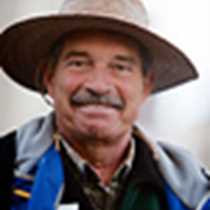Petersburg, Southeastern Alaska
Having traveled up the Wrangle Channel between Mitkof and Kupreanof Islands during the night, we saw the first rays of the sun at the entrance to the LeConte Glacier fjord. Big blue icebergs floated around us, the result of that tidewater glacier continuously calving into the ocean. Bald eagles and glaucous-winged gulls sat on some of these ice mountains as we slowly circulated among them. Then we sailed back to Petersburg, a fishing community established by Norwegian people right at this spot because of the availability of ice from the nearby glacier. It grew to become one of the cities of the United States with the highest number of millionaires per capita due to the salmon and halibut fisheries. The marina is home to numerous fishing vessels of all types: trawlers, long liners, crabbers and others. Many seabirds, including pigeon guillemots, murres, marbled murrelets, kittiwakes and glaucous winged gulls, were to be seen. We visited the small community for a while then took part in a series of guided walks along a boardwalk through a very typical muskeg or bog. Here the waters that slowly percolate through the area are rich in tannic and humic acids, making them dark and inhospitable to the majority of plants. Those plants we could see have adapted to the acid waters and the almost total absence of nitrate salts for their life. Among them were bog-laurels, buckbeans, Labrador Tea, and the interesting carnivorous plant, the sundew. These small flowering plants catch unwary midges and digest them, thus obtaining the necessary nitrogen for their growth.
Sapsuckers, ravens and bald eagles were seen during our walk, as well as a variety of vegetation on the outskirts of the bog: mountain hemlock trees, western red cedar, Alaska yellow cedar and lodge pole pines.
At 12:45 we sailed away from Petersburg and down into Frederick Sound south of large Admiralty Island, slowly directing our bow towards Sitka on Baranof Island. Until the moment of purchase by the United States, the city was called New Archangel where a university, two research centers and a shipyard were in operation. Indeed, the first steamship to be built in the Pacific Rim was done by the Russians in Sitka.
The rest of the day was used to search for life in the sea and ashore. A lecture on "The Mammals of Alaska" was given by William during the early afternoon, where we learned about the marvelous mammals of this huge state and their origins.
Having traveled up the Wrangle Channel between Mitkof and Kupreanof Islands during the night, we saw the first rays of the sun at the entrance to the LeConte Glacier fjord. Big blue icebergs floated around us, the result of that tidewater glacier continuously calving into the ocean. Bald eagles and glaucous-winged gulls sat on some of these ice mountains as we slowly circulated among them. Then we sailed back to Petersburg, a fishing community established by Norwegian people right at this spot because of the availability of ice from the nearby glacier. It grew to become one of the cities of the United States with the highest number of millionaires per capita due to the salmon and halibut fisheries. The marina is home to numerous fishing vessels of all types: trawlers, long liners, crabbers and others. Many seabirds, including pigeon guillemots, murres, marbled murrelets, kittiwakes and glaucous winged gulls, were to be seen. We visited the small community for a while then took part in a series of guided walks along a boardwalk through a very typical muskeg or bog. Here the waters that slowly percolate through the area are rich in tannic and humic acids, making them dark and inhospitable to the majority of plants. Those plants we could see have adapted to the acid waters and the almost total absence of nitrate salts for their life. Among them were bog-laurels, buckbeans, Labrador Tea, and the interesting carnivorous plant, the sundew. These small flowering plants catch unwary midges and digest them, thus obtaining the necessary nitrogen for their growth.
Sapsuckers, ravens and bald eagles were seen during our walk, as well as a variety of vegetation on the outskirts of the bog: mountain hemlock trees, western red cedar, Alaska yellow cedar and lodge pole pines.
At 12:45 we sailed away from Petersburg and down into Frederick Sound south of large Admiralty Island, slowly directing our bow towards Sitka on Baranof Island. Until the moment of purchase by the United States, the city was called New Archangel where a university, two research centers and a shipyard were in operation. Indeed, the first steamship to be built in the Pacific Rim was done by the Russians in Sitka.
The rest of the day was used to search for life in the sea and ashore. A lecture on "The Mammals of Alaska" was given by William during the early afternoon, where we learned about the marvelous mammals of this huge state and their origins.




